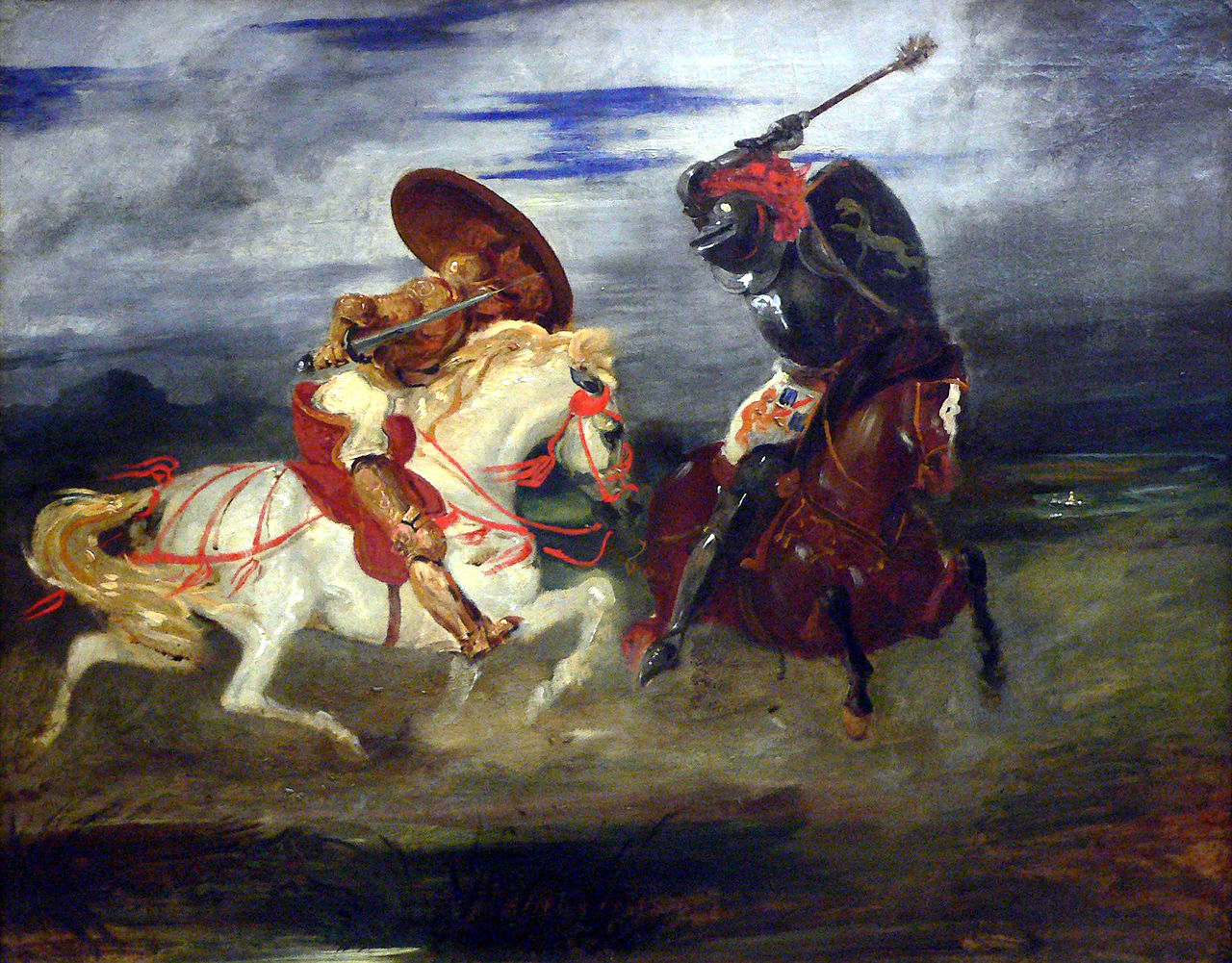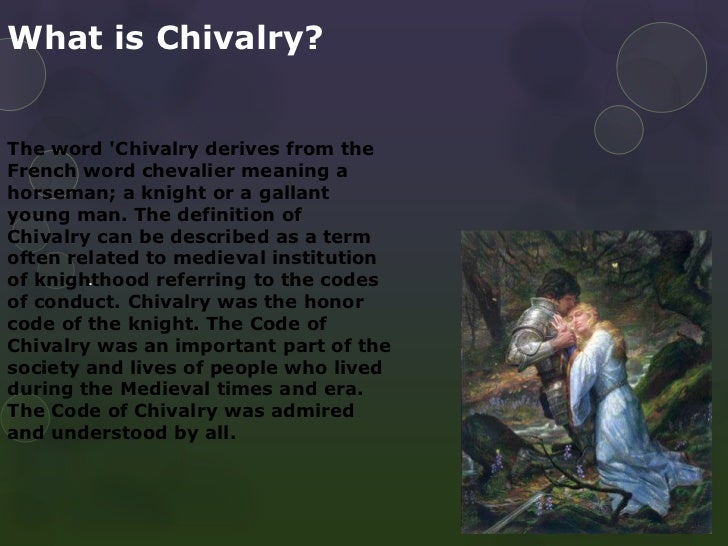

Talented knights could become rich this way. Sometimes the winning knights won the losers' horses and armor.Tournaments, jousts, and pas d'armes were all part of a number of competitions called "hastiludes".In many ways, the knights of the Middle Ages were like the sports stars of today. Tournaments and jousts attracted crowds of people for entertainment.Sometimes a knight or group of knights would stake out a bridge and refuse to let other knights pass unless they fought.Interesting Facts about Tournaments, Jousts, and the Code of Chivalry Not all knights followed the code, especially when it came to dealing with people of the lower classes. Many knights took vows that they would maintain the code. To follow the church and defend it with his life.Here are some of the main codes which Knights tried to live by: The ideal knight would be humble, loyal, fair, Christian, and have good manners. Knights were expected to behave a certain way. Two Knights Jousting, one falling by Friedrich Martin von Reibisch The winners were heroes and often won prize money. Jousting was the highlight of many games and events. A joust was where two knights would charge each other and try to knock the other off their horse with a lance. Jousting was another very popular competition among knights during the Middle Ages.

The best knight from each side was often awarded a prize. The lances used were blunted so that knights would not be killed, but many were still injured. This would continue until one side won.Īs you can imagine, tournaments were dangerous. This "turning" is where the name "tournament" or "tourney" comes from. The knights that were still on their horses after the first charge would turn and charge again. At the sound of a bugle each side would lower their lances and charge. The tournament would begin with each side lining up and preparing for the charge. Both sides would parade past the spectators shouting war cries and showing off their armor and coat of arms. There would even be stands built where the local nobles could sit to watch.

On the day of the tournament a large crowd would gather to watch. Typically the local knights fought against the knights from outside the area. When a town or area would have a tournament they would invite knights from other areas. Tournaments were pretend battles between groups of knights. Instead, Malory seems content to describe these contradictions as they are without reconciling them, and without explicitly condemning them to hypocrisy.Two Knights Jousting by Friedrich Martin von Reibisch Besides, even this chivalric ideal is internally contradictory: the ideal of chastity is somewhat at odds with the ideal of defending a lady, for instance, and Malory never explicitly condemns Launcelot’s affair with Guenever-even though it leads to a tragic end-simply because their love is so strong and “pure,” and because Launcelot is such a skilled knight in other aspects. Malory thus shows how deep of a gap there is between the chivalric ideal and the sorry morals of those inhabiting it. For instance, only Galahad, who steers clear of both (mostly because he is so young and is also divinely fated to do so), can attain the Holy Grail, while the other knights are not “pure” enough-that is, they lack the greatest honor and chivalry. Indeed, Malory’s view of the knights and of Arthurian society in general often verges on the cynical, as he shows how various knights succumb to the temptations of lust or of the selfish search for glory. Conversely, Launcelot always grants mercy to a knight that asks for it, underlining his characterization as an honorable knight-in battle, if not in spiritual purity. Sir Gawaine, for instance, refuses to grant mercy to a man who asks for it (thus breaking part of the code) and, as his lover hurls herself forward to protect him, accidentally kills the lady-carrying the shame of this act with him for the rest of his adventures. Malory’s collected stories contrast the results of following the code of chivalry with what happens when a knight breaks that code or succumbs to temptation. This is a code that is meant to govern the knights’ actions throughout Le morte d’Arthur-however, Malory also takes care to show just how difficult, if not impossible, this code proves for many of the knights, as well as how it can be easily corrupted through circumstance and human folly. Chivalry includes showing mercy, fighting for good, and protecting ladies whenever they may be in harm. Every year, at the Christian feast of Pentecost, the Knights of the Round Table renew their oaths to follow the code of chivalry as proclaimed by King Arthur.


 0 kommentar(er)
0 kommentar(er)
